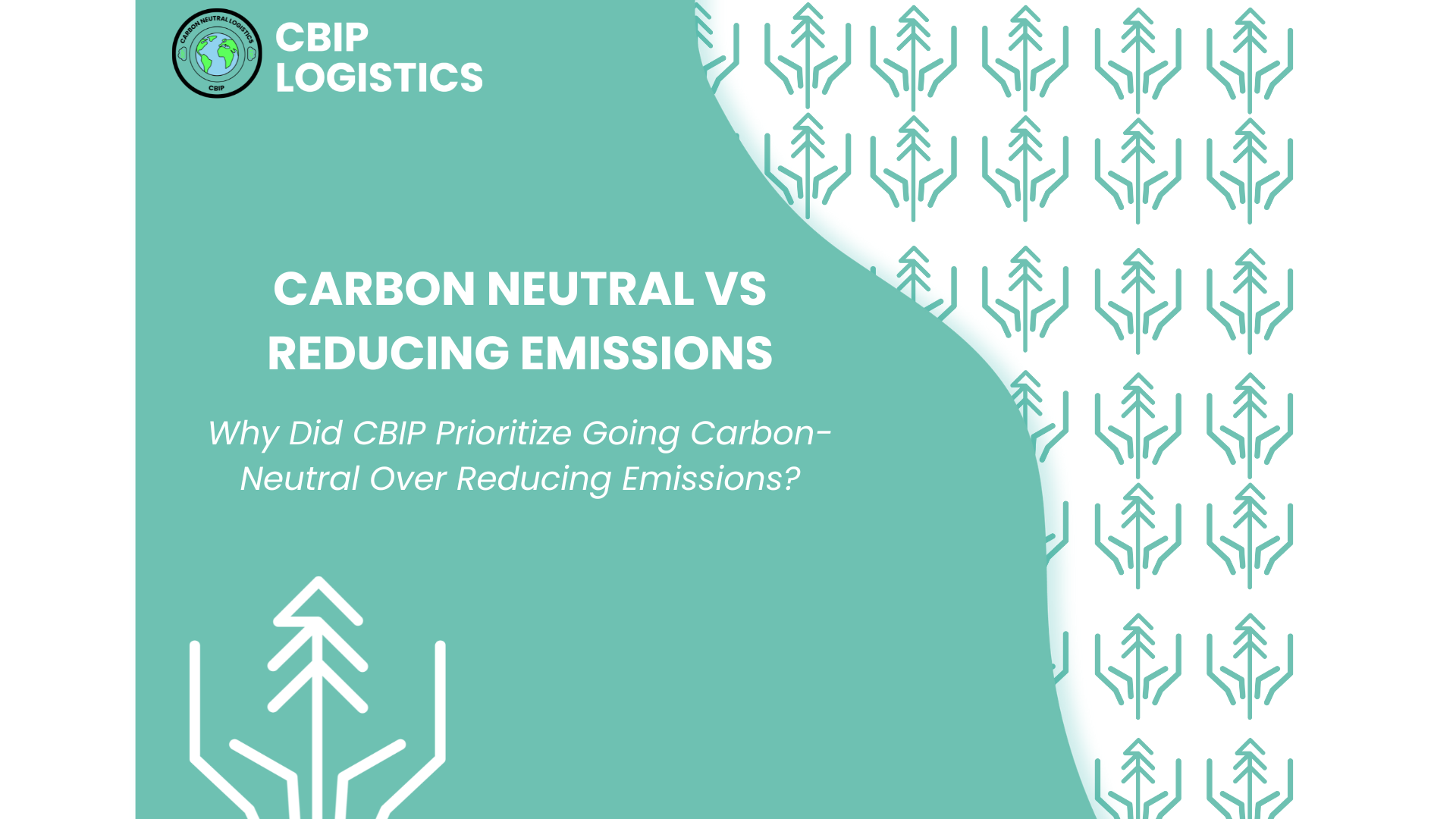Why Did CBIP Prioritize Going Carbon Neutral Over Reducing Emissions?

As the world grapples with the effects and threats of climate change, there’s an urgent call to lower emissions. This might have you wondering why CBIP Logistics has chosen to become carbon neutral instead of focusing on reducing emissions.
First, let's briefly talk about what our carbon-neutral journey looks like. We gather energy and emissions data from our partners and suppliers through monthly audits so we can calculate how many emissions our business is associated with. Once we have measured that, we purchase enough carbon credits to offset those emissions.
Carbon credits support investments in renewable energy, energy efficiency, reforesting areas, and other activities that lead to less carbon dioxide in the atmosphere.
When it comes to reducing emissions, it’s a little more complicated for a business like CBIP, and here’s why: 99% of the company’s emissions come from scope 3 emissions, which occur along our supply chain and are not within our immediate control.
The logistics partners (warehouses, trucking companies, etc) that we work with create those emissions. While we constantly collaborate with those partners, we can’t force them to change their practices to more sustainable ones — that is ultimately their decision, and it can be a big investment.
So, the main reason we focused first on carbon neutrality is simply because it’s in our direct control. However, that doesn’t mean that we aren’t consistently working on ways to reduce emissions throughout our partner network.
Now that we are carbon neutral, we are focusing our energy and resources on lowering emissions. Read on to find out how.
Read About CBIP’s Global 4PL Logistics Services
The shift to lowering emissions
The first step toward lowering emissions is measuring them and understanding where the emissions are coming from.
This is challenging since CBIP works with many partners who move customers’ goods around the world. While we can encourage those partners to choose more sustainable fuels, invest in electric vehicles, and make their warehouses run more efficiently, the choice is theirs whether they will do those things.
However, emission reduction is still a large part of CBIP’s long-term strategy. As a 4PL, we set short and long-term goals for ourselves and our partners, and there are several different ways to reach those goals.
Methods of reducing emissions vary from trying to create a culture of sustainability and leading by example, to helping partners finance investments in greener energy sources with our own money.
Some of the strategies CBIP uses to reduce emissions include:
-
Seeking out and working with suppliers and partners that already prioritize sustainability and have targets in place to reduce their direct emissions.
-
Talking with current partners about climate change and encouraging them to take action by making their operations more sustainable.
-
Collaborating with partners by loaning capital or contributing to investments in sustainable fuels, solar panels, LED lighting, efficient HV/AC systems for warehouses, electric vehicles, wind turbines, and other emission-reducing changes.
At CBIP, we have plans to set and achieve targets to lower our overall carbon impact. We went carbon neutral so that we could immediately counteract the carbon impacts of our business as we figured out the logistics of lowering emissions.
Related: Where Do Emissions In Logistics Come From?
Seeking green logistics services in Asia? CBIP is the logistics partner for you
The options for logistics providers that put sustainability first in Asia are few. One of the big reasons we started CBIP out of Hong Kong was to offer a more sustainable service to e-commerce businesses operating out of Asia, providing something new that we hope will become a trend in the region.
CBIP Logistics has a long way to go to achieve true sustainability – just like the logistics industry in Asia and all around the world. The good news is that we are on the right track. CBIP is taking action every day to improve sustainability.
When you work with CBIP Logistics, you’re partnering with a 4PL that works hard to eliminate environmental harm from our business operations. If you are interested in working with us, reach out for a free logistics consultation today.
Plus, you can click the links to find out more about our sustainability efforts and our carbon-neutral status.






